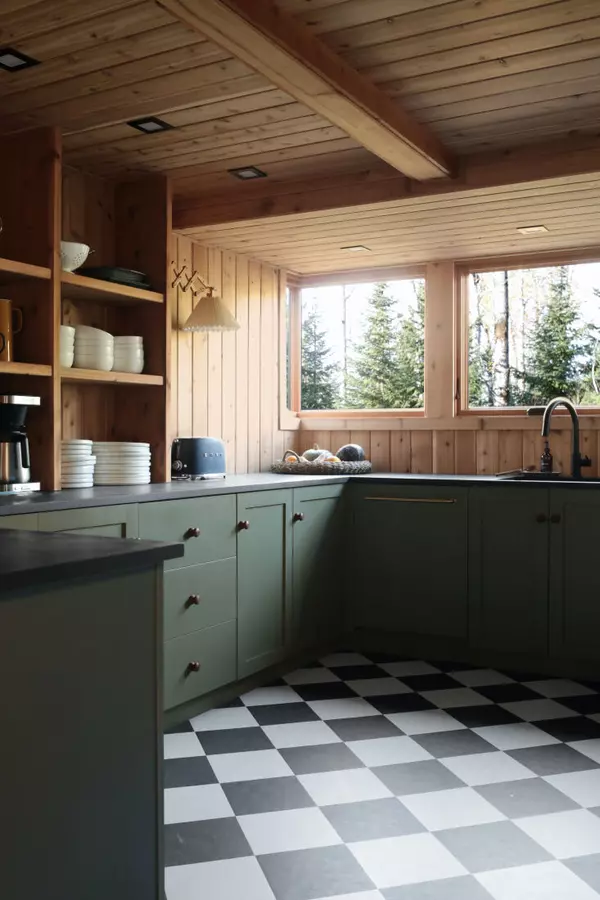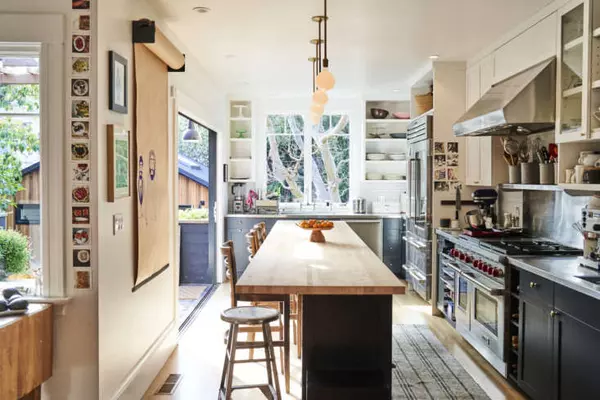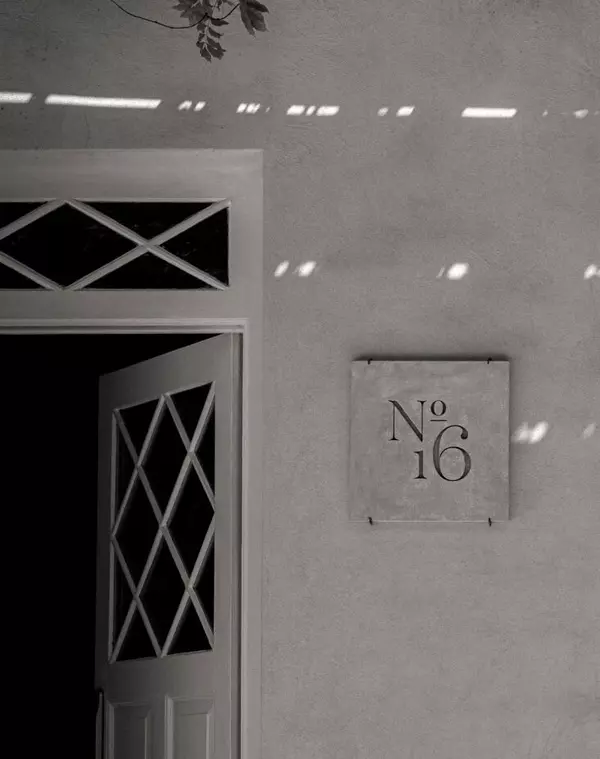Work Smarter, Not Harder: 7 Tweaks for the Kitchen from Chefs, Cooks, and Cookbook Authors
Fans of The Bear know: Seeing a restaurant kitchen in the flow of service is akin to watching a choreographed dance. But making that dance go smoothly requires a high level of organization, smart storage, and fastidious attention to detail.
Since Remodelista’s early days, we’ve loved asking chefs, cookbook authors, and cooks what tips and tricks they’ve borrowed from professional kitchens in their own places. Here are a few of our favorite pointers from over the years.
1. Add an inch.
 Above: Above: Find the standard counter height, then add an inch, like food blogger Phyllis Grant did. “Having it one inch higher is just more comfortable on the back. You don’t have to lean over quite as much.” See more in Kitchen of the Week: Practical Magic in Phyllis Grant’s Berkeley Kitchen. Photograph by Thomas Story, courtesy of Phyllis Grant (follow @DashandBella on Instagram).
Above: Above: Find the standard counter height, then add an inch, like food blogger Phyllis Grant did. “Having it one inch higher is just more comfortable on the back. You don’t have to lean over quite as much.” See more in Kitchen of the Week: Practical Magic in Phyllis Grant’s Berkeley Kitchen. Photograph by Thomas Story, courtesy of Phyllis Grant (follow @DashandBella on Instagram).
2. Source an extra-deep sink.
 Above: ““I searched high and low for a large, triple-basin sink, because as a cookbook author, I wash a lot of large pots and pans and baking sheets that don’t fit in the dishwasher,” says cookbook author Amy Thielen. “And I’m what you might call a ‘classical’ dishwasher—hands submerged in hot sudsy water, washcloth instead of sponge, coiled metal scrubber for the sticky pots—not a fan of endless soaking.” Photograph by Lacey Criswell of Hunt + Capture, styling by Alison Hoekstra, from Steal This Look: 5 Clever, Efficient Ideas from a Cookbook Author’s Home Kitchen.
Above: ““I searched high and low for a large, triple-basin sink, because as a cookbook author, I wash a lot of large pots and pans and baking sheets that don’t fit in the dishwasher,” says cookbook author Amy Thielen. “And I’m what you might call a ‘classical’ dishwasher—hands submerged in hot sudsy water, washcloth instead of sponge, coiled metal scrubber for the sticky pots—not a fan of endless soaking.” Photograph by Lacey Criswell of Hunt + Capture, styling by Alison Hoekstra, from Steal This Look: 5 Clever, Efficient Ideas from a Cookbook Author’s Home Kitchen.
3. Corral like with like.
 Above: “I like to sort things according to color, and size, and use,” says Alice Waters. “I keep my wooden spoons together and my metal spoons in a separate container.” Photograph by Daniel Dent for Remodelista from Kitchen of the Week: At Home in Berkeley with Alice Waters and Fanny Singer
Above: “I like to sort things according to color, and size, and use,” says Alice Waters. “I keep my wooden spoons together and my metal spoons in a separate container.” Photograph by Daniel Dent for Remodelista from Kitchen of the Week: At Home in Berkeley with Alice Waters and Fanny Singer
4. Label, stack, repeat.
 Above: “I use the same clear containers from Noma (similar to Tupperware) to keep ingredients organized,” says Nadine Redzepi, partner to Rene and a cookbook author herself. “Because different ingredients like flours can look the same, I label the containers with the chalk-based marker to keep it all straight. Everything goes in those clear bins and gets a label on it.” Photograph of Nadine and Rene’s home kitchen courtesy of Dinesen.
Above: “I use the same clear containers from Noma (similar to Tupperware) to keep ingredients organized,” says Nadine Redzepi, partner to Rene and a cookbook author herself. “Because different ingredients like flours can look the same, I label the containers with the chalk-based marker to keep it all straight. Everything goes in those clear bins and gets a label on it.” Photograph of Nadine and Rene’s home kitchen courtesy of Dinesen.
5. Store spices upside-down.
 Above: In his tiny NYC kitchen, chef David Tanis stores his spices in jars arrayed upside-down: “That way I can see what I’ve got, and I don’t have to bother with labeling the jars,” he says. Read more in Kitchen of the Week: Chef David Tanis’s Low-Tech, Economical, and Beautifully Soulful Kitchen in the East Village. Photography and styling by Heidi’s Bridge for Remodelista.
Above: In his tiny NYC kitchen, chef David Tanis stores his spices in jars arrayed upside-down: “That way I can see what I’ve got, and I don’t have to bother with labeling the jars,” he says. Read more in Kitchen of the Week: Chef David Tanis’s Low-Tech, Economical, and Beautifully Soulful Kitchen in the East Village. Photography and styling by Heidi’s Bridge for Remodelista.
6. All hail the speed rack.
 Above: Among the chefs and cooks we’ve talked to over the years, one element pops up over and over: the speed rack. It’s a restaurant efficiency, used to slide sheet pans in and out with ease. “I use it to store my ridiculously large collection of baking sheets and racks, and also finished pans of baked goods,” says Amy Thielen. When I bake a chocolate cake before a dinner party, I slide it into the speed rack where no one will pick at it, though they’re onto me now,” she adds. See more in Amy’s kitchen here—and catch a glimpse of built-in speed racks in the kitchens of Phyllis Grant and chef Jamie Kennedy, too.
Above: Among the chefs and cooks we’ve talked to over the years, one element pops up over and over: the speed rack. It’s a restaurant efficiency, used to slide sheet pans in and out with ease. “I use it to store my ridiculously large collection of baking sheets and racks, and also finished pans of baked goods,” says Amy Thielen. When I bake a chocolate cake before a dinner party, I slide it into the speed rack where no one will pick at it, though they’re onto me now,” she adds. See more in Amy’s kitchen here—and catch a glimpse of built-in speed racks in the kitchens of Phyllis Grant and chef Jamie Kennedy, too.
7. You can’t beat stainless.
 Above: In London, chef Alastair Hendy incorporated industrial elements from professional kitchens into his own place, including stainless steel worktops. “Everything in this space was chosen for efficiency and ergonomics,” he told us. He added a stainless steel top to an old school worktable for easy food prep (and cleanup). And when it’s time to eat? He pulls out stacking stools and the workstation becomes table. Read more of his genius tips in Revolution Road: A Ground-Breaking Kitchen in London. Photograph by Matthew Williams for Remodelista.
Above: In London, chef Alastair Hendy incorporated industrial elements from professional kitchens into his own place, including stainless steel worktops. “Everything in this space was chosen for efficiency and ergonomics,” he told us. He added a stainless steel top to an old school worktable for easy food prep (and cleanup). And when it’s time to eat? He pulls out stacking stools and the workstation becomes table. Read more of his genius tips in Revolution Road: A Ground-Breaking Kitchen in London. Photograph by Matthew Williams for Remodelista.
More chefs at home:
Categories
Recent Posts

Kitchen of the Week: A Not Too Precious Kitchen for “Faux Martha” in Minnesota

Work Smarter, Not Harder: 7 Tweaks for the Kitchen from Chefs, Cooks, and Cookbook Authors

Repère Sauvage: A Modern Retreat in the Loire Forest

10 Easy Pieces: The New Short Wine Glass

The Anti-Plastic Kitchen: 10 Easy, Enduring Swaps

Steal This Look: A Painterly Farmhouse Kitchen in Upstate New York

Before and After: A Minimalist Madrid Studio, 484 Square Feet Small

Psst: What We Loved in September

Current Obsessions: Sweater Weather

Guest House No.16 in Denmark: Norm Architects’ Seaside Retreat Inspired by Hammershøi Paintings
LEAVE A REPLY
Follow Us
